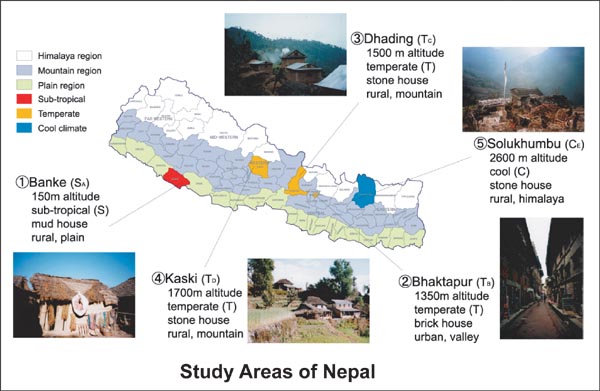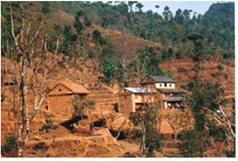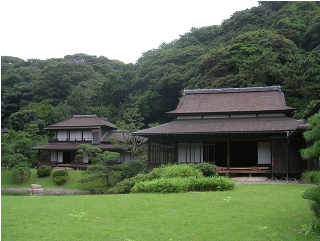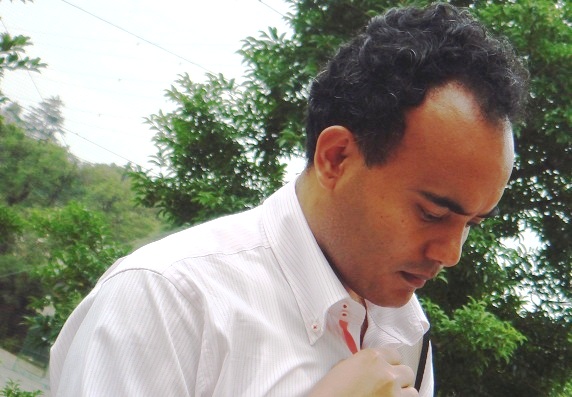| (1) Thermal environment |
| Traditional building and cities have been developed over many centuries
without creating many serious environmental or health problems. They are
well matched and adapted to the climates and cultures by using local building
materials and techniques and thus they could be one of the key issues for
sustainable building design. However, they are decreasing dramatically,
being replaced by modern designs. It is often said that traditional buildings
are cool in summer and warm in winter but not much research has been conducted.
Thus, we are evaluating and improving the thermal environment of traditional
and modern building and cities. |
   |
  |
| |
| (2) Adaptive thermal comfort |
| Thermal adaptation is one of the most important factors in creating a comfortable
indoor environment. Investigating and establishing the comfort temperature
of the occupants can suggest customary temperatures for buildings. These
temperatures are important because the chosen indoor temperatures affect
the energy used in the building, and people in comfort are in general more
productive and healthy. In order to clarify the seasonal and regional difference
in comfort temperature and to develop the adaptive model, we are conducting
the field survey in various parts of the world. |
 |
| |
| (3) Occupant behaviour |
| The adaptive principle ‘if a change occurs such as to produce discomfort,
people react in ways which tend to restore their comfort’ is the basis
of the adaptive approach to thermal comfort. Adaptive thermal comfort depends
on behavioural, physiological and psychological adaptations. People use
a variety of adaptive opportunities to regulate their indoor thermal environment.
We are developing various occupant behavioural models (window and door
opening, fan use, clothing adjustments, heating and cooling use) relating
with the indoor and outdoor thermal environment. Such models are required
for the thermal simulation of buildings and automatic controls of indoor
environment. |
 |
| |
| (4) Energy use in building |
| Firewood is the most primitive natural energy resource for human beings.
In most developing countries, firewood is used as the main energy source.
Especially in the rural areas, people are fully dependent on firewood without
being able to access any artificial energy. Firewood could become one of
the sustainable energy sources which are available locally, if managed
properly. In developing countries, firewood is burned in an open fireplace,
is very energy inefficient, and therefore the reduction of firewood consumption
is one of the most important issues. We are doing research on energy use
in building including firewood, electricity and gas. |
| |
| (5) Indoor air quality |
| Indoor air pollution started when people began to burn firewood, and has
a long history in comparison with the pollution caused by other substances
such as coal, kerosene and gas. The smoke and dust from firewood combustion
contains many chemical compounds which are harmful to the health, causing
such problems as asthma, chronic bronchitis, cancer, and irritable eye
conditions. This is the one of the major dilemmas in developing countries
where firewood is used as the main energy source. Thus, we are evaluating
and improving the indoor air pollution by firewood combustion. |
| |






